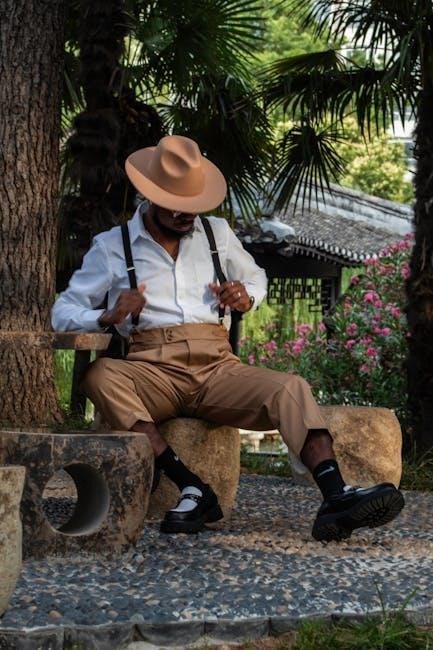
Hat sizes are determined by head circumference measurements. Proper fit is essential for style and comfort. Understanding size charts and material impacts ensures the perfect fit.
Importance of Proper Hat Fit
A well-fitting hat is essential for both style and comfort. A hat that is too tight can cause discomfort and even headaches, while one that is too loose may slip awkwardly, distracting from its aesthetic appeal. Proper fit ensures the hat stays securely in place, allowing you to enjoy its intended purpose, whether for sun protection, warmth, or fashion. Additionally, a correctly sized hat complements your face shape and overall appearance, boosting confidence and ensuring a polished look. Investing time in measuring your head and understanding size charts guarantees a seamless and satisfying experience, making every hat you wear a perfect match for your needs.
How to Measure Your Head
Use a flexible measuring tape or string to encircle your head just above the eyebrows and ears. Ensure the tape is snug, level, and not tilted. Measure the circumference carefully to determine your accurate head size, which is essential for choosing the correct hat size. This method ensures a proper fit, whether for style, comfort, or functionality, and serves as the foundation for selecting hats that complement your appearance and meet your needs effectively.
Step-by-Step Measurement Method
- Gather a flexible measuring tape or a string and a ruler.
- Position the tape or string around your head, placing it just above your eyebrows and ears.
- Ensure the tape is snug but not overly tight, keeping it level and parallel to the floor.
- Measure the circumference of your head in inches to the nearest 1/8 inch.
- Convert the measurement to a hat size using a standard size chart to find your ideal fit.
This method ensures accuracy and helps determine the perfect hat size for comfort and style.
Tips for Accurate Measurements
- Use a flexible measuring tape or string for the most precise results;
- Ensure the tape is neither too tight nor too loose during measurement.
- Measure around the widest part of your head, just above the eyebrows and ears.
- Avoid slouching or tilting your head, as this can distort the measurement.
- Take multiple measurements to confirm accuracy and consistency.
- Consider the thickness of your hair, as it can affect the fit of the hat.
- Measure at the same time of day, as head size can vary slightly due to activity or environment.
Following these tips ensures a precise measurement, leading to a comfortable and well-fitting hat.
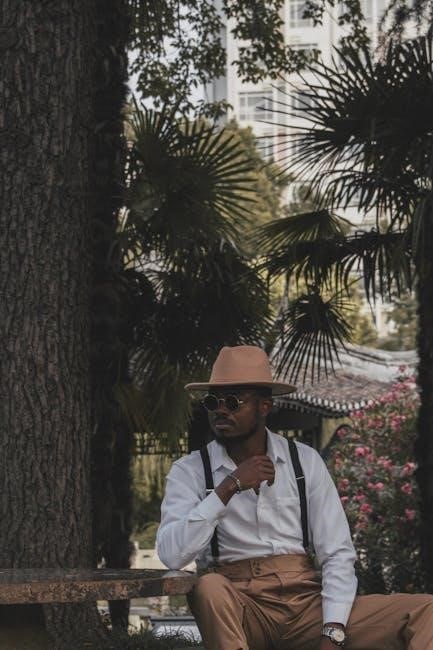
Understanding Men’s Hat Size Charts
Hat size charts convert head circumference measurements into standardized sizes. They guide you in selecting the perfect fit, ensuring comfort and style for any hat type or brand.
Standard Hat Size Chart
A standard hat size chart measures head circumference in inches, converting it into sizes like 6 5/8, 7, or 7 1/8. Each size represents an 1/8-inch increment. For example, a 7-inch head equals a size 7 hat. The chart typically ranges from 6 5/8 ( smallest adult size) to 8 (largest). To use the chart, measure around the widest part of your head, just above the eyebrows and ears. Ensure the tape is level and not too tight. This system is widely used in the US and UK, providing a consistent reference for hat sizing. Accurate measurement is crucial for a comfortable, proper fit. Always consult the chart to match your head circumference with the correct hat size, ensuring style and comfort. Proper sizing enhances the overall wearing experience, making it essential for every hat purchase.
International Hat Size Conversions
International hat size conversions enable buyers to select the correct size when purchasing from global brands. US/UK hat sizes are measured in inches, while European sizes use centimeters. For example, a 7-inch hat corresponds to approximately 55-56 cm in Europe. A conversion chart is essential to match your head circumference to the appropriate size across regions. This ensures a proper fit regardless of the brand’s origin. Understanding these conversions is particularly useful for online shoppers. Some brands provide dual sizing, listing both inch and centimeter measurements. Always refer to the specific conversion chart provided by the manufacturer to avoid size mismatches. Accurate conversions guarantee comfort and style, making international hat shopping seamless.

Hat Types and Sizing Considerations
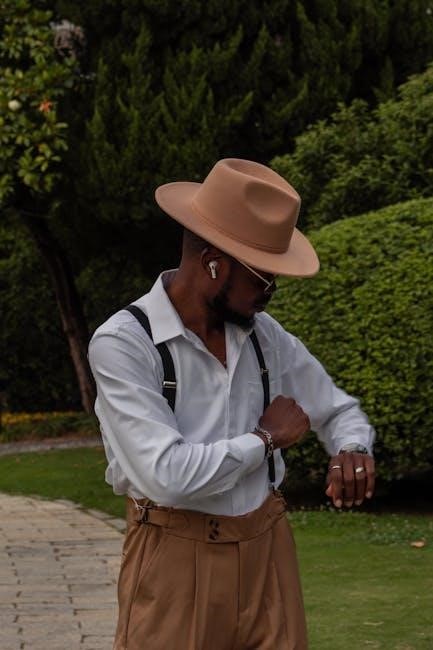
Hat Types and Sizing Considerations
Different hat styles, such as fedoras, beanies, and baseball caps, have unique sizing needs. Fit varies based on design, material, and intended use, requiring specific measurement approaches for accuracy.
Fedoras and Panamas
Fedoras and Panamas are classic hat styles with distinct sizing considerations. Fedoras typically feature indented crowns and wide brims, while Panamas are lightweight with a woven design. Both styles require precise measurements to ensure a comfortable fit. The material plays a significant role in sizing, as felt fedoras may shrink slightly, while straw Panamas maintain their shape. Proper fit involves the hat sitting level on the head, with the brim proportional to face size. For accurate sizing, measure the head circumference just above the eyebrows and ears. Consider the hat’s crown height and brim width to balance facial features. These hats are versatile, suiting various face shapes, but oval faces often find them most flattering. Ensure the hat is snug but not tight, allowing for a comfortable wear. Proper sizing enhances both style and functionality, making Fedoras and Panamas timeless choices for men.
Beanies and Knit Caps
Beanies and knit caps are popular for their versatility and warmth. Unlike structured hats, they are typically stretchy, offering a one-size-fits-all fit. However, precise sizing still matters for comfort and style. Measure your head circumference just above the eyebrows and ears to determine the ideal size. Materials like wool or synthetic yarns affect stretchiness and fit. Slouchy beanies suit oval faces, while fitted styles complement round faces. Ensure the cap isn’t too tight, as it may cause discomfort. Adjustable cuffs or ribbed bands help customize the fit. Proper sizing ensures the beanie stays in place without slipping. Choose styles that balance your face shape for a flattering look. Beanies are easy to size, but accurate measurements ensure the best fit and comfort. They’re perfect for casual wear, offering both warmth and style. Always consider material and style when selecting your beanie. Proper fit enhances both function and fashion.
Baseball Caps and Snapbacks
Baseball caps and snapbacks are popular for casual wear, offering both style and functionality. These hats typically feature adjustable straps or elastic bands for a secure fit. To ensure the right size, measure your head circumference about 1/8 inch above your ears. Baseball caps often fit snugly, while snapbacks have adjustable straps for versatility. Materials like cotton or polyester affect stretch and comfort. For round faces, curved brims balance proportions, while square faces benefit from straight brims. Proper sizing ensures the cap stays in place without slipping. Adjustable straps allow customization, making snapbacks a great option for varying head sizes. Style and material choices should align with personal preferences and face shapes. Accurate measurements are crucial for optimal comfort and a sharp look. Baseball caps and snapbacks are versatile, offering a timeless appeal for everyday wear. Always consider both fit and style for the perfect choice.
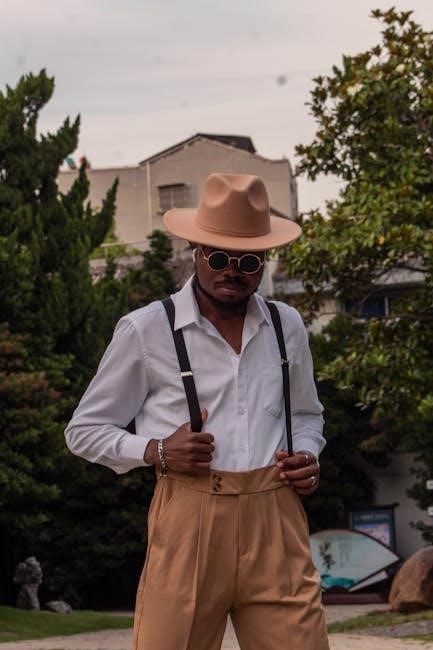
Influence of Materials on Hat Size
Materials significantly impact hat fit and comfort. Wool and cotton hats may stretch, while synthetic materials offer less flexibility. Choosing the right material ensures optimal sizing and wearability.
How Different Materials Affect Fit
Different materials significantly influence hat fit and comfort. Natural fibers like wool and cotton offer breathability and can stretch slightly, providing a snug yet adaptable fit. Synthetic materials, such as polyester or nylon, maintain their shape well but may lack the flexibility of natural fibers. Felt, commonly used in fedoras, is durable but can feel stiffer. Lightweight materials like linen are ideal for summer but may lack structure. The thickness and weave of the fabric also play a role, with thicker materials potentially feeling tighter and looser weaves offering more flexibility. Material choice impacts both comfort and the ability to hold shape, making it crucial for achieving the perfect fit.
Hat Sizing by Face Shape
Hats complement different face shapes by balancing proportions. Oval faces suit most styles, while round faces benefit from angular designs. Square faces look best with softer shapes.
Choosing Hats for Oval Faces
Oval faces are considered ideal for hats due to their balanced proportions. Men with oval faces can pull off a wide variety of styles effortlessly. Fedoras, panamas, and baseball caps are excellent choices, as they complement the natural symmetry of an oval face. When selecting a hat, ensure it is proportional to the size of the head and face. A hat that is too wide or narrow can disrupt the balance. For a polished look, opt for hats with a medium to wide brim, as they add sophistication without overpowering the face. Avoid oversized hats that may overwhelm the features. Instead, choose styles that create harmony and enhance the overall aesthetic. With the right fit and style, any hat can flatter an oval face shape perfectly.
Choosing Hats for Round Faces
Mens with round faces benefit from hats that create length and angles. Fedoras and panamas with wide brims are excellent choices, as they elongate the face. Angular styles, such as baseball caps with straight brims, also complement round faces by adding definition. Avoid overly round or small hats, as they can accentuate facial width. Instead, opt for hats with tall crowns or asymmetrical designs to balance proportions. Proper fit is crucial, as a hat that is too tight or loose can detract from the overall look. By selecting styles that add height and angles, men with round faces can achieve a harmonious and stylish appearance with their hat choice.
Choosing Hats for Square Faces
Men with square faces should opt for hats that soften strong facial angles. Fedoras and panamas with soft brims and indented crowns work well, as they add curves and balance angular features. Beanies or slouch hats in lightweight materials also complement square faces by creating a more relaxed, layered look. Avoid sharp or overly angular styles, like baseball caps with straight brims, as they can accentuate the squareness. Instead, choose hats with rounded or curved lines to create contrast. Proper fit is essential, ensuring the hat isn’t too tight or loose, as this can disrupt the balance. By selecting styles that introduce softness and curves, men with square faces can achieve a harmonious and polished appearance. This approach ensures their hat enhances, rather than emphasizes, their facial structure.

Selecting the Right Hat Size
Selecting the right hat size ensures comfort and style. Use a size chart to match your head circumference, considering hat style and material for the best fit.
Matching Hat Size to Head Circumference
Accurately measuring head circumference is key to finding the right hat size. Use a flexible tape measure, placing it about 1/8 inch above the ears and level around the head. Ensure the tape is snug but not too tight. Record the measurement in inches and compare it to a standard hat size chart. Most charts range from 6 5/8 to 8, corresponding to head sizes. If your measurement falls between sizes, opt for the larger size for comfort. This method ensures a precise fit, whether for casual wear or formal occasions, and helps in selecting a hat that complements both style and comfort effectively.
Considering Hat Style and Material
When selecting a hat, style and material play a significant role in fit. Different materials, such as wool, cotton, or synthetic fabrics, can affect how a hat sits on your head. For example, wool hats may shrink slightly over time, so opting for a slightly larger size initially can ensure a comfortable fit. Cotton hats tend to hold their shape well, while synthetic materials offer flexibility. Additionally, hat styles like fedoras, panamas, or baseball caps have unique sizing considerations. Fedoras and panamas often feature indented crowns, which may require a more tailored fit, while baseball caps and snapbacks are typically designed with adjustable straps for versatility. Beanies, on the other hand, should fit snugly without being overly tight. Considering both the material and style ensures a hat that is both comfortable and flattering.
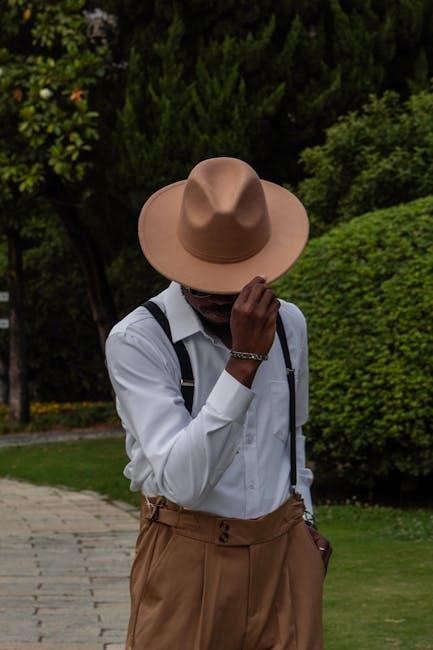
Brand-Specific Sizing
Brands often have unique sizing standards, so it’s crucial to consult their specific size charts. Some brands may run larger or smaller than standard measurements, and materials can affect fit.
Understanding Variations in Sizing
Different brands often have unique sizing standards, which can lead to variations in hat sizes. Some brands may cater to specific head shapes or materials, affecting how sizes are measured. For instance, a size 7 in one brand might fit differently in another due to differences in material stretch or design. Additionally, some brands may use international sizing charts, while others stick to regional standards. It’s important to consult each brand’s specific size chart to ensure accuracy. Factors like hat style and material can also influence fit, making it essential to consider these elements when selecting a size. Always measure your head and compare it to the brand’s sizing guide for the best results.
Troubleshooting Hat Fit Issues
Common fit problems include hats being too tight, too loose, or misaligned. Adjusting sizing strips or consulting size charts can resolve these issues effectively.
Solving Common Fit Problems
Common hat fit issues include hats that are too tight, too loose, or misaligned. If a hat feels too tight, consider stretching it gently or opting for a larger size. For loose-fitting hats, using adjustable straps or sizing strips can improve comfort. Misalignment often occurs when the hat is not positioned correctly—ensure it sits level and symmetrically. Materials like wool or cotton may shrink or stretch over time, so monitoring fit after wear is essential. Consulting size charts and understanding how different materials behave can help address these issues. Proper measurement and style selection are key to avoiding fit problems altogether. Adjustments should be made carefully to maintain the hat’s structure and appearance. Addressing these issues ensures a comfortable and stylish fit for any hat wearer.
A well-fitting hat enhances style and comfort. Use precise measurements, size charts, and material considerations to find your ideal hat. Ensure a perfect fit every time.
Final Tips for the Perfect Fit
To ensure a flawless fit, measure your head accurately and consult size charts. Try hats on if possible, and consider face shape and material. Opt for styles that balance proportions. Experiment with angles to enhance your look. Store hats properly to maintain shape, and adjust sizing if needed. Prioritize comfort and confidence for the ultimate style experience.